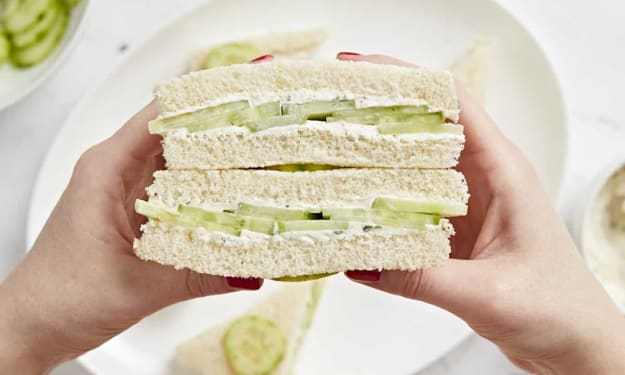Do you know how many holes a human body has?
Holes in the human body.

If you continue on, you will eventually emerge out of my other end, and for this reason, it has been said that the human body is like a doughnut. Humans have more than one hole, right? I mean, we've got nostrils and ears. The whole sweet pea out of the holes we're born from, nipples, our pores. Yes, there are subatomic gaps between the molecules we're made out of. Where don't we have holes? Well, that is the rub, literally. If you cut a clove of garlic in half and then rub that fresh raw end on your foot, about an hour later, you will start to taste garlic in your mouth. That's because the molecules that give garlic its taste are small enough and have just the right properties to permeate skin cells in your foot, enter your bloodstream, and reach your mouth. But you are even "holier" than that. Every second, day and night, about 60 billion neutrinos from the Sun pass through just your thumbnail. So, clearly, at small enough scales, how many holes does a human have becomes a meaningless question.
Ultimately, the human body isn't a solid thing that can even have holes; it's just a loose constellation of atoms and molecules. But if we accept a minimum hole size, the answer becomes pretty interesting. A good choice for this minimum is about twenty to sixty millionths of a meter, about the width of a human hair. A magic spaceship 60 microns wide could fly into your pores like they were giant holes or craters, but it couldn't continue on through the vasculature at the other end, diffuse through cells, or slip between molecules. That is significant, as it highlights the fact that not all holes are equal. A 60-micron-wide ship or string could be threaded into your mouth and come out somewhere else, but it couldn't do that by entering a pore or hair follicle.
This makes the GI tract what engineers call a "through-hole," whereas pores, urethras, nipples, ears, hair follicles, birth canals, and the sinuses are "blind holes." They can be entered but eventually dead-end, usually at narrow capillaries permeable only by things smaller than a single blood cell. The eyeball can be squeezed under, but you'll eventually be stopped by the conjunctiva; the sinuses are nice big rooms in our skulls, but the only way out is the same Ostia you came in through; as for the ear, well, the ear is a blast to go inside, but if you're 60 microns wide, the airtight eardrum will block further passage; it's a blind hole.
Now altogether, counting all of your pores and hair follicles, you've got millions of blind holes all over your body, but are they actually holes? That's a real humdinger because you know what a hole is, what a hole really is. It's a word, a colloquial, fuzzy, imprecise lexeme that refers to a host of disparate, utterly unreconciled things that elude a single precise mathematical definition. In fact, holes might not even exist. I mean, think about it; if I eat a whole doughnut, have I eaten the whole? Like, is the hole inside me? Or could I eat a doughnut without eating its hole? Could I go to a store and buy Swiss cheese but leave the holes at the store? Clearly, holes are, at best, ontologically parasitic; their existence depends upon the existence of something else that they can inhabit or be a disturbance in.
Of course, the philosophy of holes rarely matters in your day-to-day life; you can call something a hole, and context will do its work, and people will know what you're talking about. But take a look at this; does this have a hole in it? Well, yeah, right, obviously; right here, there's a hole; I can put my hand in it; it can store things, it's got a hole. But now imagine that I could mold it like it was made out of clay, and I molded it down into the shape of a drinking glass. You could see how that could happen, right? Well, does a drinking glass have a hole in it? If this does, then this should, right? I mean, I didn't pinch the hole shut or glue anything together. Alright, sure, fine; I mean, I can accept that a drinking glass technically has a hole in it. But now imagine that I took this glass and I molded it out and I widened its opening until I had a shape like this, a bowl. Now, does a bowl have a hole in it? Not really. So if a plate doesn't have a hole in it, but this shape did, and I continuously molded from here to the glass, to the bowl, to the plate, and I never glued anything shut, where'd the hole go? Clearly, blind holes are pretty unique; they can be removed without closing or pinching anything shut.
Compare that to the through-hole of a doughnut; there is no way to remove a doughnut's through-hole or add a new through-hole without gluing stuff together, squishing things together that used to not be together, or ripping pieces apart, poking a hole through, and breaking it. That is extremely significant. But let's go back to the body before we get ahead of ourselves. The mouth is an entrance to both blind and through holes; a 60-micron-wide traveler could enter it, meander down the esophagus, and keep going until they were well dumped out. But turn down the trachea, and they would dead-end in the lungs. Now, the area of the throat behind the mouth is called the pharynx; it's a pretty chill place, except not really. It plays a role in warming, moistening, and filtering the air that we breathe before it enters the lungs, including the air we inhale through our nostrils.
Each nostril leads into a separate nasal vestibule, that's the tunnel that you can explore when you pick your nose. Eventually, those tunnels meet, and sniffed air enters the nasal cavity, a hollow air-filled room in your face. Protruding from the walls of the nasal cavity are mucusy fins called the nasal Concha or turbinates that warm and moisten the air that passes around them. From there, the air flows via the pharynx down the trachea. So, your nostrils and your mouth are connected; a string could go into your mouth or nose and come out your butt. The nasal cavity is quite the hub; I mean, your ear holes would almost lead into it, but the eardrum blocks the way. If it didn't, there would be a clear passage from the outside into the middle ear and then down the eustachian tube into the nasal cavity via an opening about here. The eustachian tube controls air pressure in the middle ear behind the eardrum and is normally collapsed shut. But if the outside pressure is dramatically different than the air pressure in the middle ear, swallowing and yawning can get it open, equalizing the pressure. That's what happens when you pop your ears; it's cool but not a through-hole.






Comments
There are no comments for this story
Be the first to respond and start the conversation.